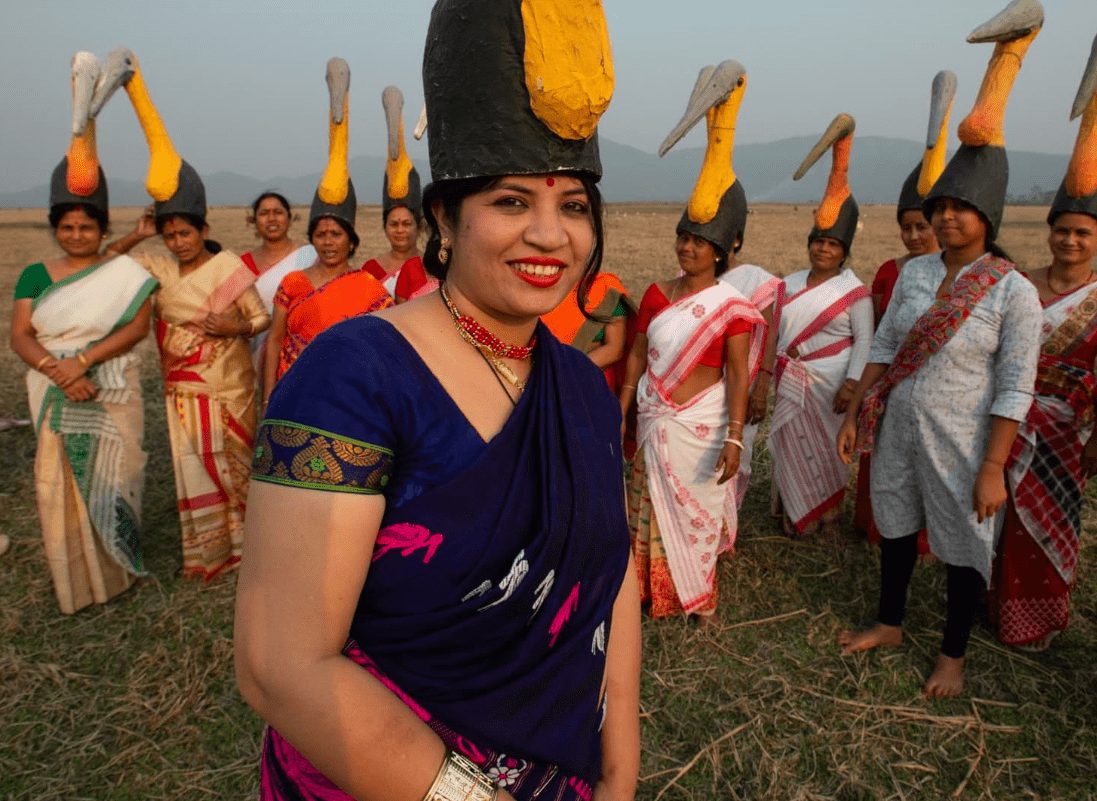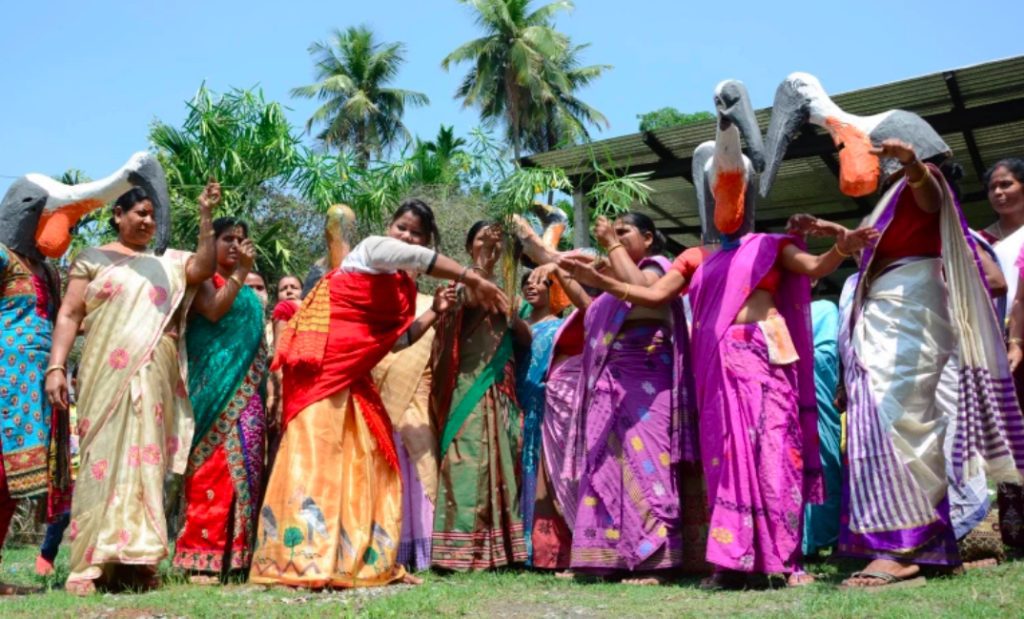Purnima Barman and her Hargila Army is on a mission to save India’s storks


Purnima Barman, 39, is known for successfully creating the ‘Hargila Army’, an all-female team of conservationists dedicated to protecting the Indian stork. Burman is a conservationist biologist who during her PhD discovered a sharp decline of the greater adjutant from the Indian subcontinent. The findings were particularly disturbing for her, as the biologist has grown up playing with the big giant stork at her backyard in Pub Majir village, Assam.
Adjutant storks are also known as hargilas, or “bone swallowers” in Assamese. They are openly reviled by the local inhabitants where the birds are found. Storks are seen as a nuisance and vermin by most of them, therefore making the task of their conservation increasingly difficult.
According to Purnima’s research, the storks were a common feature until the 19th century. They were widely found in south and southeast Asia. In the 1800s, the bird could be seen as emblems on heritage buildings of Calcutta, the capital city of West Bengal, India. However, things changed with rapid urbanisation, infrastructure development, tall phone towers and forceful migration of the birds from their natural habitat to human settlements where they were despised.
The Arduous Journey Of Changing Human Perception
Conservation of storks was an uphill task because the giant endangered bird was looked down by people. According to the International Union for Conservation of Nature’s Red List of Threatened Species, the world is left with only 800 to 1,200 mature stork – most of them are in Assam, India.
Barman knew conservation of storks can happen only if the perception of people change. She thus decided to educate people on the ecological significance of storks. She explained at village community meetings how storks clean up the environment by consuming decaying animal carcasses and maintain the food chain in an ecosystem by regulating the number of smaller animals like rodents and other pests. Like this, she started disseminating information about storks on which people were earlier ignorant about.
She then began with an active community participation drive. Organising cooking events where she can talk about the importance of storks for the local habitat directly to the people. Slowly she was able to include the bird and made them part of local celebrations including the ones where women make traditional Assamese rice cakes or pithas and laddoos, toffee-like desserts.
Barman and her team organised baby showers for newborn hargilas. They collaborated with theatre groups to put plays with stork themes. Hargila puppets were crafted by women volunteers and worn by the actors as they sing and dance to generate awareness about the birds. Hargila motifs were woven into traditional Assamese attire to include the bird as a symbol of Assamese culture.
Barman told Al-Jazeera, “The idea was to inculcate a sense of ownership and community pride in the rare breed of the stork.”
The Force Behind The Successful Conservation: Stork Sisters

In 13 years, Barman and stork sisters did the unthinkable. Their concerted efforts increased the stork’s nests from bare 27 to 210. The army of 400 women conservationist campaigned from village to village to create awareness about the storks. They rehabilitated injured birds that fell from their nests and handed them to the Assam State Zoo authorities. They worked together with forest officials and local policemen to further their conservation efforts. According to Barman, since 2010, after the Hargila Army took charge of the movement to save the storks, not a single nesting tree was cut down.
The army of women keeps a strict vigil on the nests. Volunteers keep watch every day from bamboo platforms that are 24m (80 feet) tall and that have been constructed throughout the district. The world’s first-ever artificial breeding platform where chicks can hatch in safety was also built last year to address the problem of the birds’ shrinking habitat. All of this has been funded by Barman’s programme.
In 2017, Barman’s hard work was recognised and honoured with the Green Oscars – the London-based Whitley Award. Her mission though is not yet complete. She aims to expand the conservation initiative and take it to more villages, cities, districts of Assam and India.
We at realshepower hope and wish to see her achieve more heights for a better future, ecologically sane environment and increased nesting of India’s storks.
Featured image: Roundglass
